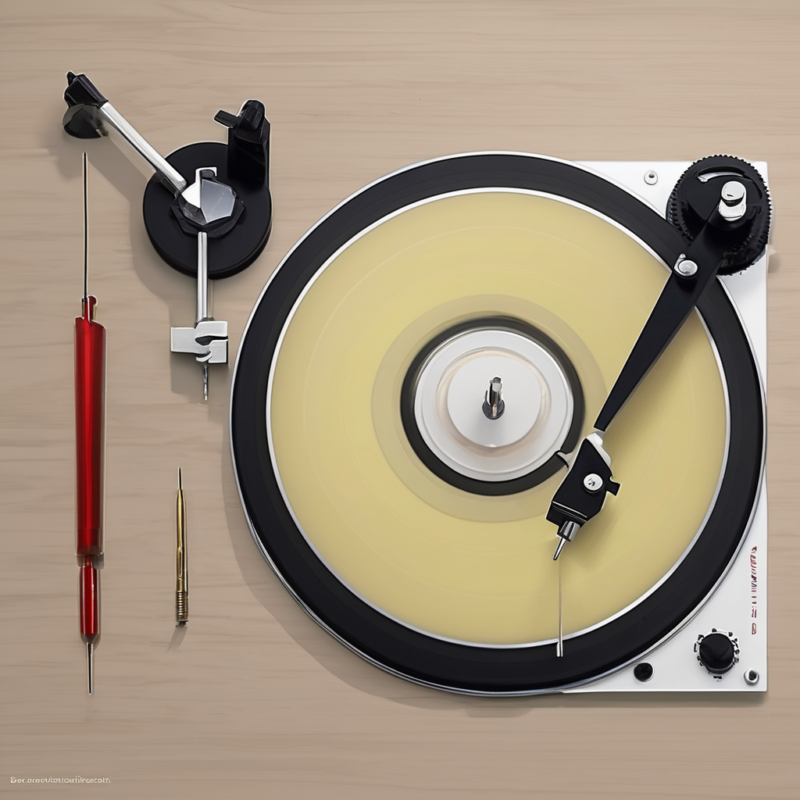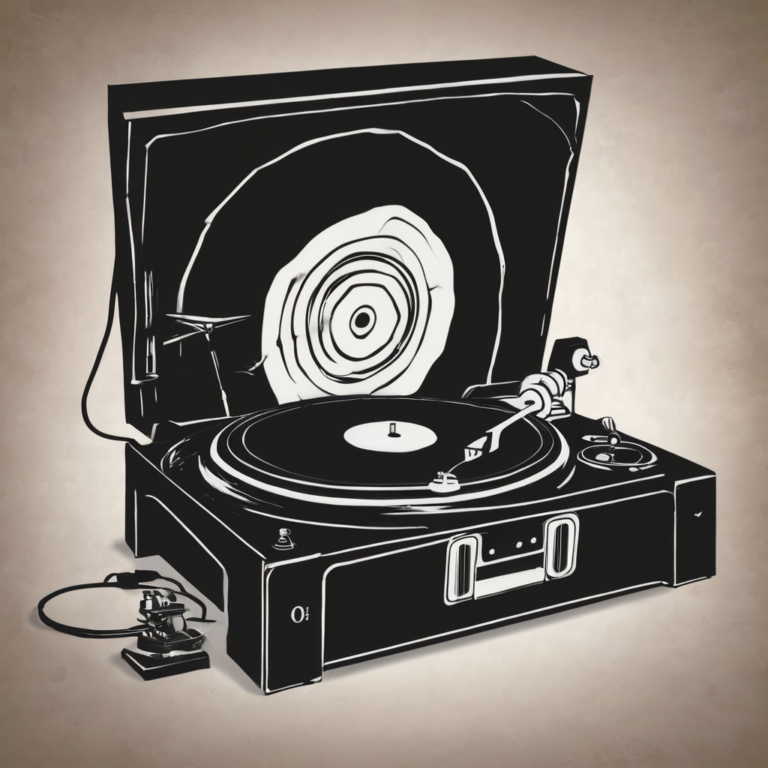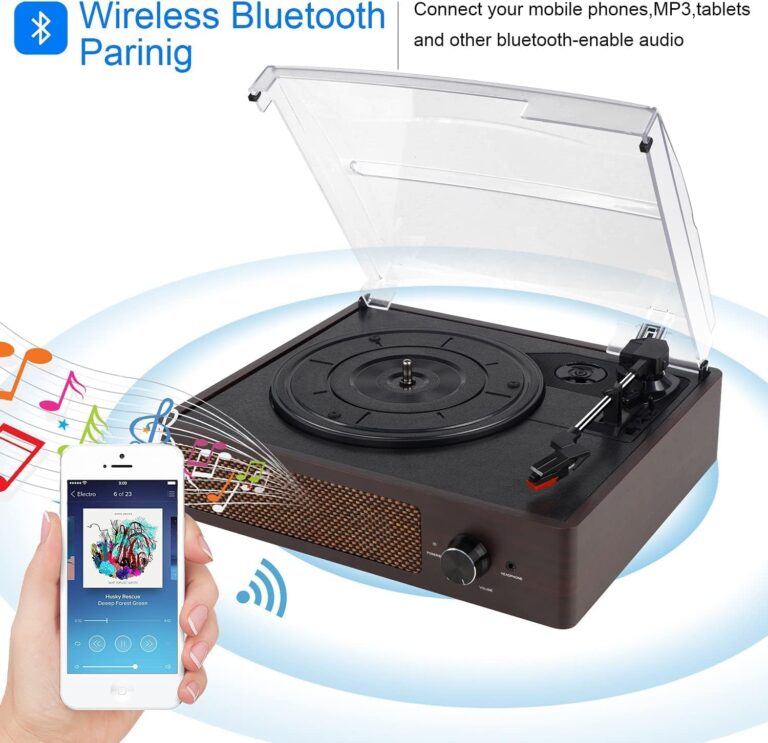How to Clean a Turntable Needle
As a music enthusiast, I can’t stress enough the importance of maintaining your turntable to ensure the best possible sound quality. A key part of this maintenance is knowing how to clean a turntable needle. It’s a seemingly small task, but you’d be surprised to learn how much it can enhance your listening experience.
When was the last time you took a close look at your turntable needle? If it’s been a while, chances are it’s due for a good cleaning. A dirty needle not only distorts your music but can also cause damage to your records. So, let’s roll up our sleeves and delve into the art of cleaning a turntable needle to keep your music sounding its best.

Why Cleaning the Turntable Needle is Essential
It’s about more than just turntable maintenance; it’s about enhancing your vinyl playback experience.
You see, proper stylus care can significantly extend the needle’s lifespan. Imagine not having to frequently replace your stylus due to neglect. Plus, taking the time to ensure dust removal from your needle can greatly improve the sound clarity of your records.
Also, the better the audio quality, the richer your listening experience will be. We’re part of the vinyl community, and we know that any degradation in sound can detract from the joy of spinning your favorite records.
Don’t forget about the impact on your vinyl collection. Cleaning the needle is a crucial part of record player upkeep. It’s not just about protecting the needle; it’s about preventing damage to your beloved vinyl records as well.
Invest in the right turntable accessories for cleaning and maintaining your stylus. Trust me, your records will thank you for it.
Common Signs Your Needle Needs Cleaning
First and foremost, a muffled sound. If you’re noticing that the vibrant tones and crisp high notes that once flowed seamlessly from your speakers have started to dull or become less pronounced, your needle could be the culprit. Over time, a buildup of dust and debris can cause your needle to produce a sound that’s just not as lively as it should be.
Next, watch out for skipping or jumping records. This is a definite red flag that your needle could use some cleaning. An unclean needle can cause your records to skip or jump, disrupting your listening experience.
Finally, if you spot visible dust or debris on the needle, it’s a sure sign that it’s high time for some sprucing up. Remember, a clean needle equals happy listening; so don’t ignore these signs!
Materials Needed for Cleaning
Firstly, you’ll want to get your hands on a record stylus brush. This nifty little tool is key to keeping your needle as clean as a whistle, without causing any damage to its delicate structure.
Next up in your toolkit should be record stylus gel. I can’t stress enough how this gem can help lift off any stubborn grime that’s glued itself to your needle. Just a dab of this magic stuff and you’ll see it work its wonder.
Lastly, don’t forget to include a magic eraser. Think of this as your final step in the cleaning process. It’s perfect for picking up any leftover particles that the brush and gel might have missed.
There you have it, the holy trinity of tools you need to keep your needle in tip-top shape. Remember, a clean needle means a clean sound.
Step-by-Step Guide to Cleaning Your Turntable Needle
Each method offers a unique approach, and I’m certain you’ll find one that suits your needs perfectly.
Method 1: Using a Record Stylus Brush
Using a record stylus brush is a straightforward and effective way to keep your needle in top shape. Here’s how it works: delicately glide the brush from the back of the needle towards the front. Never brush side-to-side as this can damage the delicate needle.
This cleaning routine should ideally be a part of your daily usage habits. Remember, keeping your needle clean not only ensures the longevity of your records but also helps maintain the crispness of the sound your turntable produces.
Method 2: Using Record Stylus Gel
This gel is not just your regular cleaning agent, it’s a game-changer that can make a world of difference in your music-listening experience. The process is straightforward: Apply a small amount of gel to the stylus, let it sit for a minute, then gently remove it. The gel traps any impurities on the needle, leaving it pristine.
The benefits of this method are significant. Not only does it provide a deeper clean, but it’s also less abrasive than brushes, ensuring you’re not inadvertently damaging your stylus. So, you see, sometimes the best things in life are simple.
Method 3: Using a Magic Eraser
I want to underscore that this is an unconventional method and it’s not for everyone. The process is simple but demands caution. You’ll delicately lower the needle onto a small piece of the eraser, letting it pick up any grime. Lift it off gently, ensuring not to drag or pull the needle sideways.
This method can be an effective deep clean, however, if done carelessly, it can damage your needle. So, if you’re a beginner or uneasy about this, I’d recommend sticking with the brush or gel methods.
Always prioritize the well-being of your equipment.
FAQs
How often should I clean my turntable needle?
There’s no one-size-fits-all answer, as it largely depends on your usage. However, it’s a good practice to wipe your needle after each record side to prevent grime build-up. For a thorough cleaning, doing it after every 20 hours of playtime is a good rule of thumb. Remember, regular cleaning not only keeps your records sounding their best but also helps prolong the life of your needle.
Can a dirty needle damage my records?
It can. A grimy needle doesn’t just result in a lackluster performance, but it can also cause permanent wear on your cherished vinyl collection. Minute particles of dust, grime, or debris can act like sandpaper, damaging the grooves of your records. This is not just about preserving your needle, but most importantly, about extending the longevity of your records.
What other tools can I use for cleaning?
Of course, you can! Besides the standard carbon fiber brush, there are a few other helpful tools you could explore. Consider using a magnifying glass to help you spot any stubborn bits of debris. You could also use a needle cleaning fluid which is designed specifically for this purpose. Additionally, a compressed air duster can be a great tool for getting rid of dust without physical contact.
How do I know if my needle needs replacing?
Your needle might need a replacement if you’re noticing a consistent distortion in music output, even after thorough cleaning. If your records are sounding scratchy or the volume is fluctuating, it’s a good indication your needle has worn out. Also, if you’ve played about 1,000 hours of music, it’s generally time to consider a replacement.
Conclusion
In conclusion, keeping your needle pristine is central to an optimal listening experience. It’s not merely a matter of aesthetics, but a practical way to extend the life of your records and preserve their integrity.
Remember, signs of a dirty needle can be subtle—so it’s worth taking this as a routine. While it might seem like a chore, with the right tools and a gentle touch, you’ll have it cleaned up in no time.
Our Mission: At AudioInspects, we are dedicated to providing the most comprehensive and authentic reviews of audio equipment on the market. We conduct independent testing and research of products, so you can make an informed decision before making a purchase. Our mission is to help you find the best audio equipment to improve your listening experience. So trust us to deliver the most reliable recommendations and advice.
Disclosure: When you do decide to make a purchase through our links, please note that we may earn a commission, but this does not affect the honesty of our reviews. You can read our affiliate disclosure in our Disclosure.






